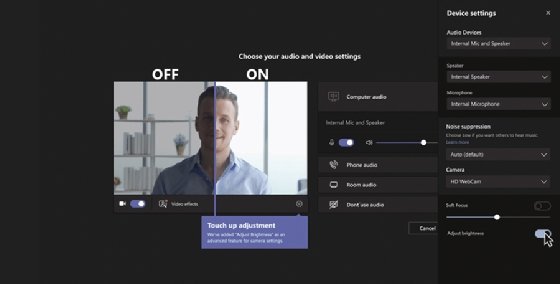
Getty Images
Microsoft updates Teams to filter out echoes
Microsoft will make Teams calls more like telephone conversations, using AI to filter out background noise and echoes that disrupt conversations.
Microsoft added AI-powered echo cancellation to Teams, letting workers video conference from more places as they split time between home and the office.
This week, the company introduced voice capabilities meant to improve the audio quality of Teams meetings. Microsoft said the updates will drown out the echoes from cavernous rooms and cut down on awkward pauses during meetings.
Echo cancellation will be available in Windows and Mac versions of Teams first, followed by mobile devices soon, the company said. Specific availability dates were not provided.
Teams' AI will counter the echoes often heard in locations with poor acoustics, Microsoft said. Large rooms can reflect sound into an employee's microphone, making it difficult for fellow meeting attendees to hear them. Suppressing that noise frees workers from worrying about their surroundings.
Hybrid work will force video meeting providers to accommodate a variety of environments, Technalysis Research analyst Bob O'Donnell said.
During the pandemic, many workers found a reliably quiet space for their meetings. However, office reopenings and the return of business travel mean employees have less control over their meeting locations. A worker may be at home one day and in an echoey conference room or at a shared desk the next. In those situations, software-powered noise filtration will be critically important, O'Donnell said.
Echo cancellation will also make video-meeting conversations more fluid, Microsoft said. Given its proximity, a laptop's microphone will often pick up audio from its speaker, causing an echo. Echoes can be especially noticeable when two workers try to talk at the same time, slowing conversations as they negotiate who should speak.
By using AI to filter echoes, Microsoft aims to make Teams video meetings more like traditional telephone calls, O'Donnell said. Over the phone, two speakers can overlap without additional noise, resulting in a less stilted conversation.
Microsoft's competitors already use AI to address video-meeting sound shortfalls as well. Cisco purchased noise-filtration company BabbleLabs in 2020 to make it easier to hear coworkers during Webex meetings. Zoom also has a background-noise cancellation feature.

"Background noise reduction has been around for a while, and [video conferencing providers] have all gotten relatively good at it," O'Donnell said. "A lot of [audio-quality improvements] are incremental steps."
Beyond echo cancellation, Microsoft will use AI to bolster Teams video quality. With this update, Teams now adjusts the brightness of a video feed to account for low-light scenarios, and determines whether to prioritize video quality or playback smoothness in low-bandwidth situations, depending on the type of content shared.
The persistence of hybrid work means many meetings will have at least some remote participants, making call quality a key feature for collaboration vendors. More than 90% of 9,000 employees surveyed by Gallup last summer expected to work from home at least part of the time.
Mike Gleason is a reporter covering unified communications and collaboration tools. He previously covered communities in the MetroWest region of Massachusetts for the Milford Daily News, Walpole Times, Sharon Advocate and Medfield Press. He has also worked for newspapers in central Massachusetts and southwestern Vermont and served as a local editor for Patch. He can be found on Twitter at @MGleason_TT.








